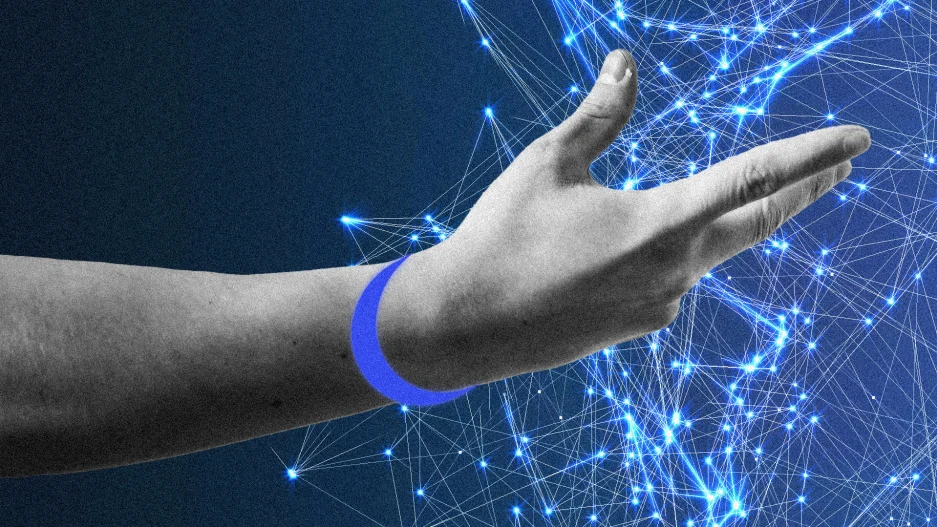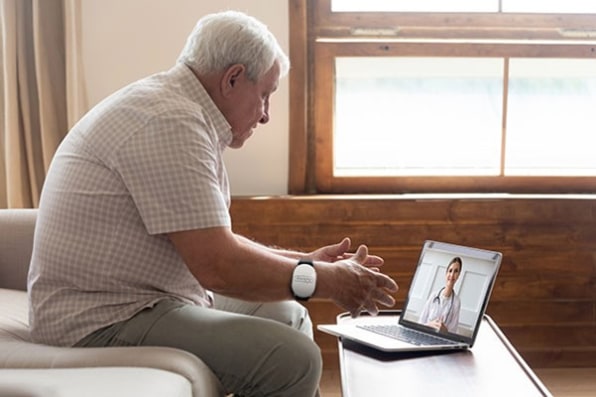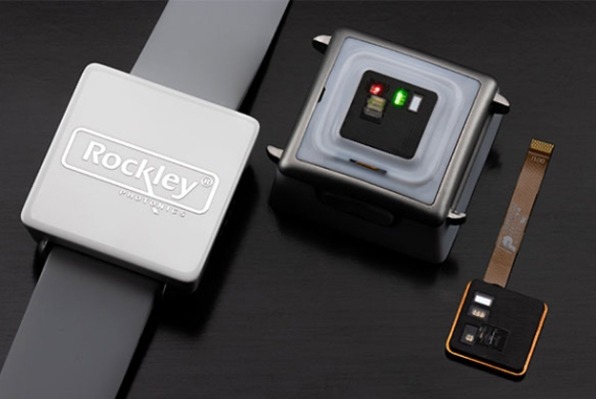- | 8:00 am
Rockley Photonics is developing a wearable to track blood sugar

A deal between two little-known companies—at least, to the public—could bring to the market something that health experts have for years considered the holy grail of wellness: glucose-monitoring capabilities on wearable tech.
Rockley Photonics, the California-based maker of the biosensors used in Apple devices, announced Thursday a partnership with Medtronic, a medical-device manufacturer headquartered in Minnesota, to scale a health wearable that can detect a bevy of health metrics, including glucose, or sugar, levels. That may sound boring, but being able to detect glucose levels without a blood sample or an implant is a big deal—one that has the potential to save a lot of lives.
Rockley Photonics has previously designed and tested a wrist-worn health wearable, called the Bioptx, which can detect glucose trends along with body temperature, blood pressure, body hydration, alcohol, and lactate. The Bioptx is built to last several days between charging and only monitors biometrics. (You cannot email from the device or take a call.) But the Bioptx has not yet been made widely available to the general public; the new partnership with Medtronic will help scale manufacturing of Rockley’s technology and run the clinical trials necessary to gain approval from the Food and Drug Administration (FDA).

Rockley Bioptx [Photo: Rockley Photonics]
“We’re very much engaged in that market and working on designing our technology into leading companies in the consumer space and into their future generations of products,” says Rockley CEO Andrew Rickman.
Health has historically been thought about in the context of disease. Obesity has long been used as an indicator for understanding a person’s risk of common diseases like heart disease, stroke, and type 2 diabetes (a trifecta known as metabolic syndrome). There are other associations like high blood sugar and high cholesterol, but weight, perhaps as the most visible of signals, became a target for addressing poor health. That is changing as researchers uncover that humans can be metabolically healthy and heavy. It turns out you don’t need to be lean to be healthy (and—shocker!—you can be skinny and unwell).
Blood sugar is now one of the key metrics for understanding health in people who are at risk of developing some of the most common diseases. High blood sugar puts people at risk of diabetes, yes, but also blood vessel, nerve, organ, and tissue damage—all of which increase risk of heart attack, stroke, kidney disease, and blindness, according to the Cleveland Clinic. A class of startups, including January AI, Levels, Signos, and Supersapiens have cropped up to help people who are not diagnosed with diabetes get a handle on their blood sugar by tracking it with a continuous glucose monitor, but that tech relies on needles and bulky external devices.
Current wearable glucose monitors detect glucose levels through the body fluid that runs between cells. It requires injecting a piece of filament into your arm through a needle, a process that’s not painful so much as it is jarring (especially for anyone with a fear of needles). Everyone agrees that being able to slap a smartwatch on your wrist to track glucose would be a far better experience, but it has been difficult to miniaturize the necessary technology.
Rockley has figured out a way to make the necessary sensors small enough to fit on a wrist and developed machine learning to better understand a person’s glucose reading. It built a chip-based spectrophotometer, which means it can use a variety of light sources to measure biometrics through skin. The company then uses artificial intelligence to understand what those sugar levels mean within the context of an individual to answer whether their sugar is too high, too low, or average.

[Photo: Rockley Photonics]
Now it needs to get the technology produced at scale, sold into health systems, and begin the process of seeking FDA approval. That’s why it’s partnering with Medtronic. “The med-tech market is actually moving faster for us than the consumer market,” says Rickman. “We’re finding traction in that market pre-FDA qualification of our devices, because the medical market wants to get the benefit of monitoring patients.”Even without FDA approval, he says, doctors want to be able to offer patients remote monitoring technology, not to make medical decisions, but so that they can have some sort of barometer for understanding their own health as they follow doctors’ orders.
Through the deal with Medtronic, Rockley will be in “volume production” in the fourth quarter of this year, according to Rickman, meaning these devices will start making their way into health systems next year. But the technology also has implications for future consumer-level devices like the Apple Watch.
Apple has reportedly been trying to get this technology into its watches for years without success, and a 2021 Securities and Exchange Commission filing shows that Apple is Rockley Photonics’ largest customer.
Maybe the suits in Cupertino are waiting to bring Rockley’s tech to their Apple Watch—though they’ll need to fix battery-life issues first. For healthcare applications, like glucose monitoring, that are taking place continuously in the background, battery life is key. “It’s just not feasible to charge the device every day,” Rickman says. “It’s got to be multiple days between charging.”








































